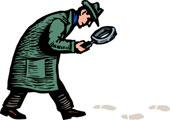- Southampton Middle School
- Course Outline
- • 8.1 Scientific Investigation
Edwards, Stephen (Grade 8 Physical Science Teacher)
Page Navigation
-
P.S. 1: Scientific Investigation

- Select appropriate equipment (triple beam balances, thermometers, metric rulers, graduated cylinders, and spring scale) and utilize correct techniques to measure length, mass, volume, temperature, and force.
- Design a data table which includes space to organize all components of an investigation in a meaningful way, including levels of the independent variable, responses measured of the dependent variable, number of trials, and mathematical means.
- Record measurements using the following metric units (SI): liter, milliliter (cubic centrimeters), meter, centimeter, millimeter, grams, degrees Celsius, and newtons.
- Create an appropriate graph (bar, line, or circle) for a given set of data. Select the proper type of graph for a given set of data, identify and label the axes, and plot the data points.
- Read a graph and analyze patterns, determine trends, and make predictions through extrapolation.
- Gather, evaluate, and summarize information using multiple and variable resources. Detect bias from a given source.
- Identify the key components of controlled experiments: independent and dependent variables, constants, controls, and repeated trials.
- Formulate conclusions that are supported by the gathered data.
- Apply the methodology of scientific inquiry: begin with a question, design an investigation, gather evidence, formulate an answer to the original question, and communicate the investigative process and results.
- Communicate in written form the following information about investigations: the purpose/problem of the investigation, the procedures, materials, data and/or observations, and an interpretation of the results.
- Describe how creativity comes into play during various stages of scientific investigation.
- Recognize metric prefix units and make common metric conversions between the same base metric unit (for example, milligram to gram, kilometer to meter).
-
 Which measurement? Part 1 (Matching)
Which measurement? Part 1 (Matching)  Which measurement? Part 2 (Matching)
Which measurement? Part 2 (Matching)  Base units, Symbols, Tools (Half a Minute)
Base units, Symbols, Tools (Half a Minute)  Variable Definitions and Examples (Fling the Teacher)
Variable Definitions and Examples (Fling the Teacher)  Conversion, Notation, Graphs (Challenge Board)
Conversion, Notation, Graphs (Challenge Board)  Physical Science Formulas
Physical Science Formulas Metric Pyramid
Metric Pyramid Triple Beam Balance Lab (Density/Water)
Triple Beam Balance Lab (Density/Water)

